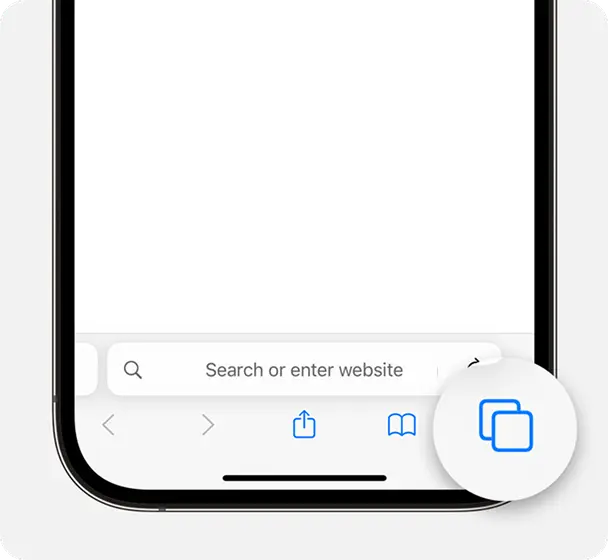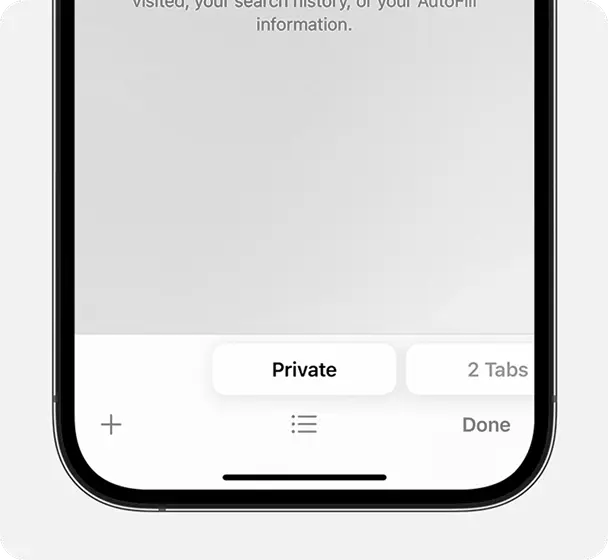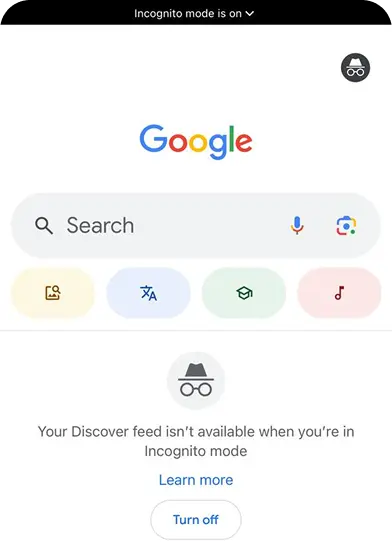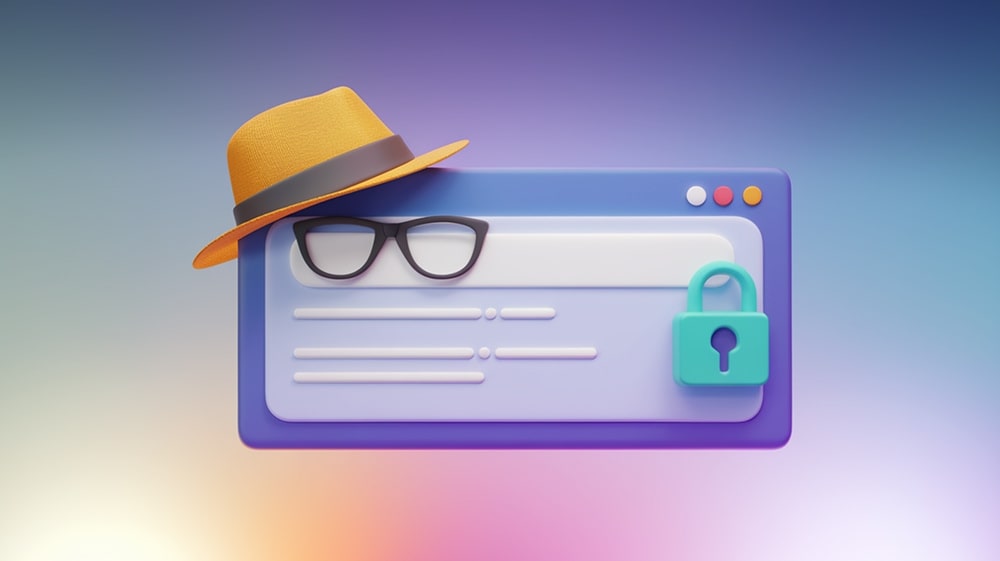What is Incognito Mode on iPhone?
Incognito Mode is also known as Private Browsing. When activated, Safari (or any other browser) stops saving your history, cookies, and temporary files during that session.
When Is It Typically Used?
People use Private Browsing for different purposes, including:
- Searching for sensitive information without leaving a trace.
- Shopping for gifts without the risk of ruining surprises.
- Logging into multiple accounts without logging out of another.
- Avoiding targeted ads based on browsing history.
- Keeping borrowed devices free of personal data if you’re lending your iPhone to another person.
- Simulating first-time visitor experiences. Developers and marketers often use private browsing to test how websites behave for new users.
Incognito mode is a handy tool, but it’s not always necessary – or even desirable.
Why You Might Want to Exit Incognito Mode
There are several reasons why you may need to turn off Private Browsing:
- Saved logins and autofill data – In Private Browsing, Safari doesn’t save usernames, passwords, or form entries. If you want your browser to remember credentials, switching to regular browsing is necessary.
- Keeping browsing history – If you frequently revisit the same pages, Private Browsing won’t retain your history for easy access later.
- Slower performance – Since incognito mode doesn’t cache pages or store cookies, loading times can be slower compared to normal browsing.
- Limited syncing capabilities – If you regularly switch between Apple devices and need to sync tabs across them, Private Browsing disrupts this process.
- Enabling parental controls – Some parental control features don’t work in Private Browsing, so you may need to turn it off for content restrictions to apply.
So, how to get out of incognito mode on iPhone and return to standard browsing? Let’s walk through the steps.
How to Turn Off Private Browsing in Safari
Whatever the reason, exiting private browsing is simple – if you know where to look. Let’s break it down step by step, so you can seamlessly turn off private browsing on iPhone and get back to your usual browsing experience.
How to turn off private browsing on iPhone:
- Open Safari on your iPhone.
- Tap the Tabs button (looks like two overlapping squares) at the bottom right.

- If you’re in Private Browsing, the group "Private" will be highlighted in bold text.

- Tap any of the other tab groups displayed (these will be labelled with a number indicating your regular tabs or "Start Page" if you have no regular tabs open). You can also do it by swiping.
You can also close all of your private tabs by one click: just touch and hold the "Done" button then tap Close All Tabs when in Private Mode.
How to turn off private browsing on iPad
The process to turn off Private Browsing on iPad is nearly identical to the iPhone method but has slight layout differences due to the larger screen.
- Open Safari on your iPad.
- Tap the Tabs button in the top-right corner.
- If “Private” is active, switch to another tab group or “Start Page” to exit Private Browsing.
How to Permanently Turn Off Private Browsing on an iPhone
If you want to disable Private Browsing on iPhone permanently, you’ll need to remove access to the Private Browsing tab in Safari. This is especially useful for parents or employers managing a child’s or employee’s device.
How to disable incognito mode on iPhone permanently?
- Go to Settings on your iPhone.
- Scroll down and tap Screen Time.
- Select Content & Privacy Restrictions and turn it ON.
- Tap App Store, Media, Web & Games.
- In Web Content choose Limit Adult Websites or Only Approved Websites.
Why does this work? When Safari’s web content is restricted, Apple disables Incognito Mode to ensure that browsing activity is monitored.
How to Turn Off Private Browsing in Chrome on iPhone
Google Chrome’s Incognito Mode on iPhone works similarly to Safari’s Private Browsing, preventing history, cookies, and autofill data from being saved. If you need to turn off Private Browsing in Chrome on iPhone, follow these steps:
How to Get Out of Incognito Mode on iPhone (Chrome)
- Open Chrome on your iPhone.
- If you’re in Incognito mode, you’ll immediately notice a dark-themed interface with the message “Incognito mode is on” displayed at the top of the screen. Additionally, an Incognito icon will appear in the center of the screen for easy access.

- Tap the "Turn Off" button located directly in the center of the screen. Alternatively, tap the "Incognito mode is on" label at the top of the screen. This will open a menu where you can select "Turn Off Incognito Mode" to return to standard browsing.
Pros and Cons of Using Private Browsing
Private browsing, whether in Safari or Chrome, offers different advantages and limitations. While it’s a powerful tool for specific use cases, understanding its pros and cons can help you decide when to use it – and when to stick with regular browsing. Let’s break it down.
Advantages of Private Browsing
- No local history – Your browsing activity isn’t saved on your device.
- No autofill data stored – Logins, passwords, and forms aren’t retained.
- Session-based privacy – Once you close the tab, everything disappears.
- Prevents automatic logins – Useful for managing multiple accounts.
- Reduces tracking for local users – On shared devices, others won’t see your history.
- Reduced ad tracking – By blocking cookies, private browsing limits websites’ ability to track your behavior across sessions.
- Testing first-time user experiences – For developers or marketers, private browsing simulates a fresh session, providing insights into how a site behaves for new visitors.
Disadvantages of Private Browsing
- Slower performance – Without caching, pages load slower, especially on weaker connections.
- Limited syncing capabilities – Cross-device syncing via iCloud or Google is restricted, disrupting a seamless experience.
- False sense of security – While local traces are hidden, your activity is still visible to ISPs, websites can use digital fingerprinting to identify you, and your internet traffic is not hidden from hackers, employers, or governments
- Partial cookie blocking – Some cookies and trackers remain active during the session, allowing websites to gather limited data.
- Frequent reauthentication – You may find yourself constantly logging back into accounts after each page refresh or visit, as private browsing doesn’t save session data.
Private Browsing vs. Regular Browsing: A Comparison
💡 Key takeaway: Private Browsing helps keep your local device history clean, but it doesn’t offer real privacy. Your IP, metadata, and browsing habits are still visible to trackers, ISPs, and even governments.
How to Enhance Your Privacy Beyond Private Browsing
Many people mistakenly believe that Private Browsing (or Incognito Mode) makes them invisible online, but in reality, it only prevents local history and cookies from being stored. Your IP address, browsing activity, and online identity are still exposed to websites, internet providers, and even advertisers.

If you’re serious about privacy, here’s what you need to do:
1. Adjust Safari’s Privacy Settings
Even when using Safari iPhone without Private Browsing Mode, there are several built-in privacy features you can enable:
Go to Settings > Safari > Privacy & Security
- Toggle on “Prevent Cross-Site Tracking” – This blocks advertisers from tracking your activity across different websites.
- Hide IP Address > Select “From Trackers” – This makes it harder for websites to identify you.
- Toggle on “Fraudulent Website Warning” – This alerts you if you visit a suspected phishing site, helping protect against scams.
Go to Settings > Safari > Settings for Websites
- Under "Camera," "Microphone," and "Location," choose between Ask or Deny based on your preferences – This prevents unauthorized access to sensitive hardware like your camera, microphone, and location while maintaining flexibility for trusted sites.
Go to Settings > Safari > Advanced
- Advanced Tracking and Fingerprinting Protection > Select “All Browsing” – This blocks sophisticated tracking techniques used by advertisers.
- Toggle on “Block All Cookies” – Toggle this option to completely eliminate cookie-based tracking, though some websites may not function properly as a result.
- Toggle on “Privacy Preserving Ad Management” – Opt in to help Apple improve ad systems without compromising your personal data.
2. Use a VPN
A VPN (Virtual Private Network) encrypts your internet traffic and hides your real IP address, making it harder for third parties to track you.
✅ What a VPN does:
- Encrypts your internet connection, preventing ISPs and hackers from spying on your data.
- Masks your IP address, making it look like you're browsing from another location.
- Allows secure access to public Wi-Fi without exposing personal data.
❌ What a VPN doesn’t do:
- It doesn’t prevent website fingerprinting (websites can still recognize your device by its unique characteristics).
- It doesn’t encrypt your emails or private communications (you’ll need end-to-end encrypted email like Atomic Mail for that).
3. Switch to a Privacy-Focused Browser
While Safari and Chrome offer Private Browsing, they still collect data and rely on trackers. If you want true privacy, consider switching to a browser built for security.
🔹 Brave Browser – Blocks ads and trackers by default.
🔹 Tor Browser – Routes your traffic through multiple encrypted layers for anonymity.
🔹 DuckDuckGo Browser – Automatically enforces encrypted connections and blocks trackers.
💡 Why does this matter? Private browsing only prevents history from being stored locally, but these browsers go a step further by blocking tracking attempts at the network level.
Final Thought
If you’re serious about privacy, don’t rely on Private Browsing Mode alone. Combine secure browsing, VPN encryption, and Atomic Mail’s end-to-end encrypted email service to protect both your browsing activity and your private conversations.
🔐 Take control of your online privacy today with Atomic Mail. Because real privacy means no tracking, no logging, and no compromises.
